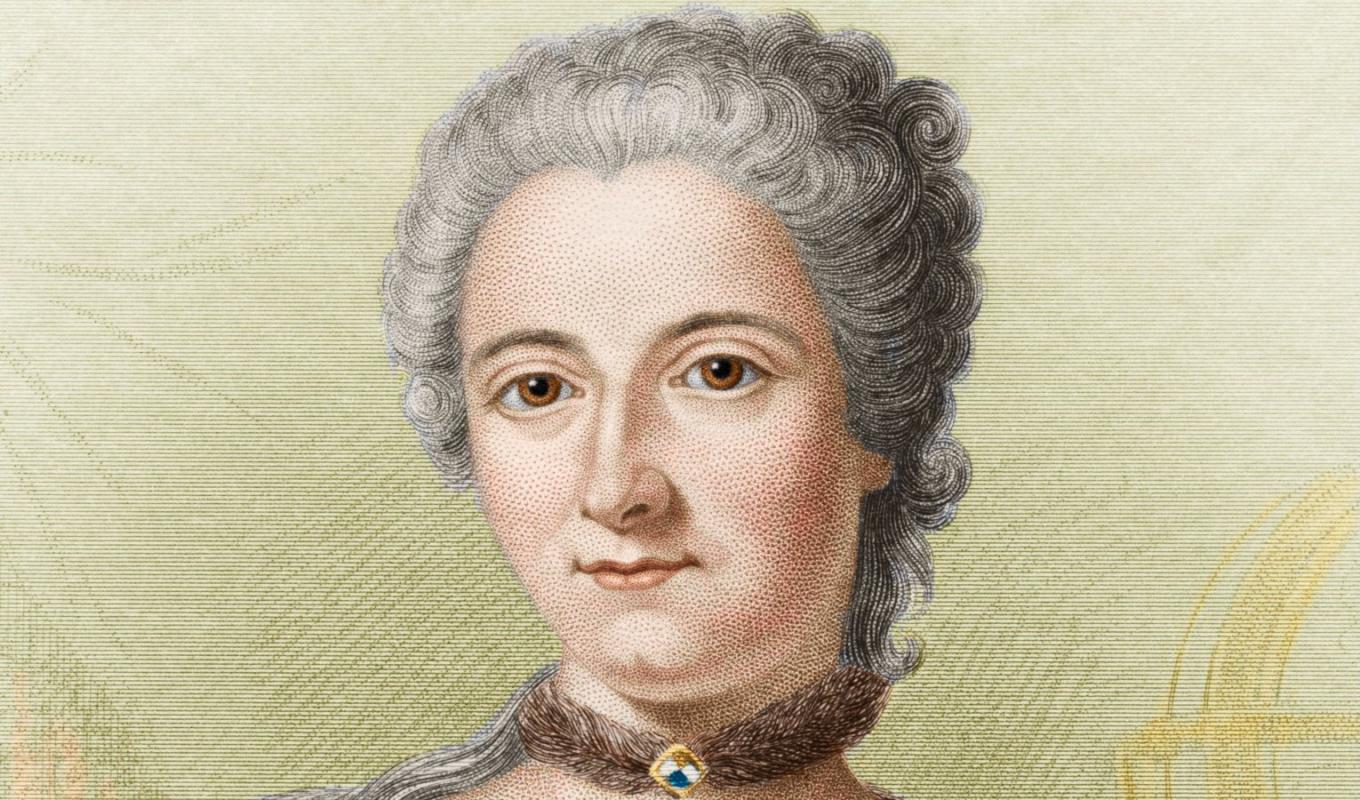
Émilie du Châtelet is undoubtedly one of the most fascinating and remarkable figures in the realm of intellectual history. As a brilliant mathematician, physicist, and philosopher, she defied the conventions of her time and left a lasting impact on the world of science. Despite facing numerous obstacles and prejudices as a woman in the 18th century, she made groundbreaking contributions that continue to inspire and inform scholars to this day.
In this article, we will delve into 15 astonishing facts about Émilie du Châtelet, shedding light on her incredible accomplishments, her influential relationships, and her undeniable legacy. From her groundbreaking translation of Isaac Newton’s “Principia Mathematica” to her passionate and tumultuous affair with the famous philosopher Voltaire, these facts paint a captivating portrait of this extraordinary woman and offer a glimpse into the remarkable life she led.
Key Takeaways:
- Émilie du Châtelet was a remarkable polymath who defied societal norms and made groundbreaking contributions to science, mathematics, and philosophy during the 18th century, inspiring future generations of female scientists.
- Her passionate love affair with Voltaire, her pioneering work on energy conservation, and her advocacy for women’s education continue to inspire and empower aspiring women in the scientific community today.
Émilie du Châtelet was a renowned French mathematician, physicist, and author.
Émilie du Châtelet was a brilliant polymath who made significant contributions to the fields of science and philosophy during the 18th century.
She had a deep passion for mathematics and was tutored by famous mathematician Pierre Louis Maupertuis.
From a young age, Émilie du Châtelet displayed exceptional aptitude for mathematics and received rigorous training from notable scholars of her time.
Émilie du Châtelet became the first woman to publish a critical edition of Isaac Newton’s “Principia Mathematica.”
Her groundbreaking work in translating and annotating Newton’s masterpiece not only made his ideas accessible to a wider audience but also showcased her own intellectual prowess.
She had a passionate love affair with Voltaire, a prominent Enlightenment philosopher.
Émilie du Châtelet and Voltaire shared a deep and intellectually stimulating relationship that lasted for over 15 years, during which they collaborated on various scientific and philosophical endeavors.
Émilie du Châtelet’s greatest contribution to science was her groundbreaking work on energy conservation.
She proposed the concept of kinetic energy and emphasized the importance of energy conservation, laying the foundation for future advancements in physics.
She was a trailblazer for women in academia, defying societal norms and pursuing her intellectual passions.
Émilie du Châtelet challenged the prevailing beliefs that women were intellectually inferior and broke barriers to make significant contributions in the male-dominated world of academia.
Émilie du Châtelet’s passion for learning extended beyond science and mathematics.
She was fluent in multiple languages, including Latin and Greek, and had a deep interest in literature, philosophy, and history, making her a well-rounded scholar.
She wrote several literary works, including a play and essays on philosophy and morality.
Émilie du Châtelet’s literary works showcased her intellectual versatility and provided insights into her philosophical beliefs and moral values.
Émilie du Châtelet’s translation of Newton’s work into French played a crucial role in the dissemination of scientific knowledge in Europe.
Her translation made Newton’s groundbreaking ideas more accessible to the French-speaking world, influencing scientific thought across the continent.
She made significant contributions to the understanding of light and developed a theory on the nature of colors.
Through her experiments and observations, Émilie du Châtelet advanced the understanding of light and color, adding to the knowledge base of optics.
She was a strong advocate for women’s education and empowerment.
Émilie du Châtelet believed in the importance of education for women and actively promoted equal opportunities for intellectual pursuits.
Her work on the concept of force influenced future scientific thinkers, including Immanuel Kant.
Émilie du Châtelet’s insights on force and motion had a profound impact on the scientific community and laid the groundwork for further exploration in the field.
Émilie du Châtelet’s contributions to science were acknowledged and respected by her contemporaries, including renowned scientists and philosophers.
Her profound intellect and groundbreaking ideas earned her admiration and recognition from some of the greatest minds of her time.
She made significant advancements in the understanding of electricity, paving the way for future discoveries in the field.
Émilie du Châtelet’s experiments and theories on electricity contributed to the growing body of knowledge in the field of electrical science.
Émilie du Châtelet’s legacy continues to inspire and empower generations of female scientists.
Her contributions to science, her unwavering determination, and her relentless pursuit of knowledge serve as a beacon of inspiration for aspiring women in the scientific community.
Conclusion
In conclusion, Émilie du Châtelet was an extraordinary woman who made significant contributions to mathematics, physics, and philosophy. Her passion for knowledge and relentless pursuit of intellectual growth set her apart as a trailblazer in a time when women were not widely accepted in the academic sphere.From translating Newton’s Principia Mathematica to conducting groundbreaking experiments, du Châtelet’s work continues to inspire and influence scholars today. Her dedication to the pursuit of truth and her ability to challenge established norms serve as an inspiration for generations to come.As we reflect on her life and accomplishments, it is important to recognize the obstacles she faced as a woman striving for recognition in a male-dominated field. Émilie du Châtelet’s legacy reminds us of the power of determination, perseverance, and intellectual curiosity.In our contemporary society, we continue to strive for gender equality and recognize the importance of acknowledging the contributions of women in history. It is through celebrating individuals like Émilie du Châtelet that we can foster a more inclusive and equal world for future generations.
FAQs
Q: What were Émilie du Châtelet’s major achievements?
A: Émilie du Châtelet was a brilliant mathematician, physicist, and philosopher. Her major achievements include translating Newton’s Principia Mathematica into French, conducting innovative experiments on the nature of fire and heat, and developing theories on the conservation of energy.
Q: How did Émilie du Châtelet contribute to the understanding of Newtonian physics?
A: Émilie du Châtelet’s translation of Newton’s Principia Mathematica made his complex theories accessible to a wider audience. She also added her own commentary and annotations, helping readers understand and apply Newtonian concepts more effectively.
Q: What challenges did Émilie du Châtelet face as a woman in her field?
A: In a time when women were discouraged from pursuing academic careers, Émilie du Châtelet faced numerous challenges. She had to navigate societal expectations, overcome gender biases, and fight for recognition in a male-dominated field.
Q: What is Émilie du Châtelet’s significance in the history of philosophy?
A: Émilie du Châtelet made significant contributions to the philosophy of science. She explored concepts of causality, time, and space, and developed her own philosophical theories that challenged prevailing philosophical beliefs of her time.
Q: How did Émilie du Châtelet’s work impact future generations?
A: Émilie du Châtelet’s work continues to inspire and influence scholars in various fields. Her dedication to intellectual curiosity, her contributions to scientific knowledge, and her determination to break barriers for women in academia leave a lasting impact on generations to come.
Émilie du Châtelet's groundbreaking contributions to mathematics and physics continue to inspire curious minds. If you're fascinated by the world of Philosophy, explore the thought-provoking insights of Epictetus. For those captivated by the mysteries of the universe, dive into intriguing Physics facts that shed light on the fundamental laws governing our world. And if you're eager to learn more about the giants whose shoulders Émilie stood upon, uncover the remarkable life and discoveries of Isaac Newton, one of the most influential scientists in history.
Was this page helpful?
Our commitment to delivering trustworthy and engaging content is at the heart of what we do. Each fact on our site is contributed by real users like you, bringing a wealth of diverse insights and information. To ensure the highest standards of accuracy and reliability, our dedicated editors meticulously review each submission. This process guarantees that the facts we share are not only fascinating but also credible. Trust in our commitment to quality and authenticity as you explore and learn with us.


